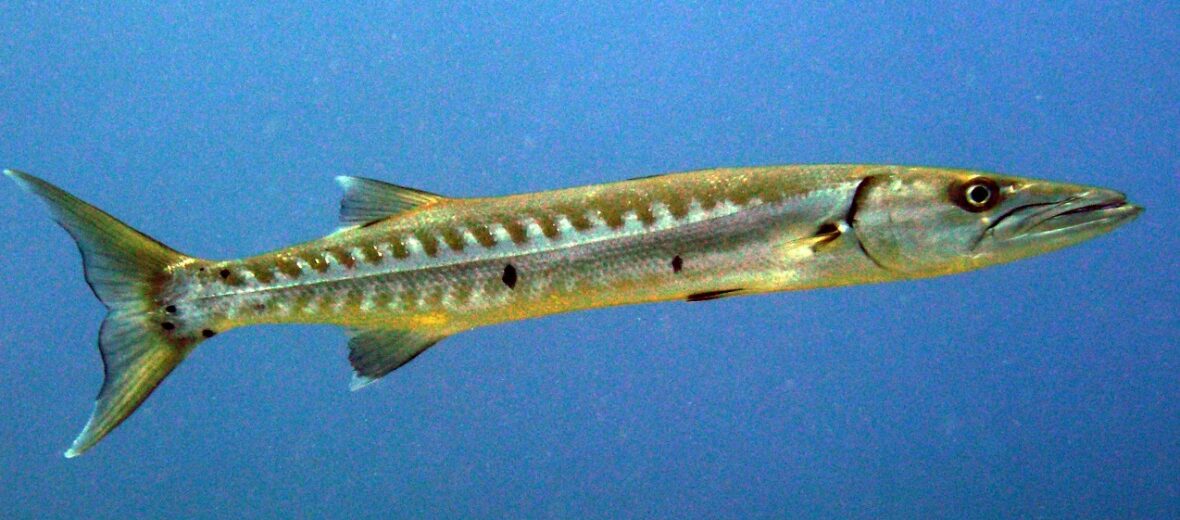
With razor sharp teeth and a body built for speed, the barracuda is a fish to be reckoned with. Their curious nature also tends to bring them into close contact with divers and spear fishermen. These fish can be found in oceans around the world. Most reside in warm tropical and subtropical waters. They can be found in coral reefs, the open ocean, and even in the shallower, brackish waters of mangrove forests. Barracuda’s are able to swim at depths of up to 325+ feet. There are 30 known species of barracuda. Even though they are a popular sport fish and can suffer at the hands of pollution and bycatch (getting mistakenly caught in fishing nets), these fish are listed as Least Concern by the IUCN.
First the Stats…
Scientific name: Sphyraena
Weight: Up to 100 lbs.
Length: Up to 5+ feet
Lifespan: Up to 14+ years
Now on to the Facts!
1.) The great barracuda is the biggest member of this family.
2.) Barracudas are ambush predators that use surprise and speed to catch unsuspecting fish.
3.) They prey on all kinds of smaller fish, crustaceans, and squid.
4.) These fish are attracted to shiny objects. Ooh, shiny!
5.) Juveniles are typically seen in shallower water, while adults prefer the open sea and reefs.
But wait, there’s more on the barracuda!
6.) They are nocturnal (active at night). But can still be seen during the day (diurnal).
7.) Orcas and sharks prey on barracudas.
Did you know…?
Barracudas can swim at speeds of up to 36 mph! This ranks them among the fastest fish in the sea.
8.) Mating season takes place in spring.
9.) Females release up to 1,000 eggs which the male fertilizes. The eggs are left to the fates.
10.) Only a handful of juveniles will make it to adulthood.
Now a Short Barracuda Video!
Be sure to share & comment below! Also, check out the Critter Science YouTube channel. Videos added frequently!
Want to suggest a critter for me to write about? Let me know here.



